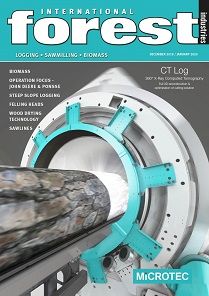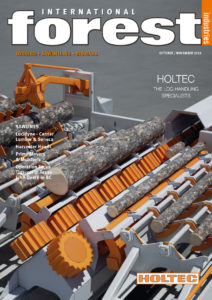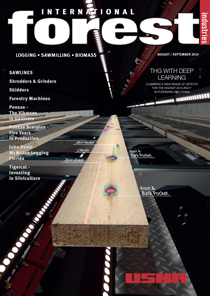EDITOR’S COMMENT ISSUE 73
Rebuilding communities
The Australian bushfires have brought out the best in the wood industry
A large part of me wants to use these column inches to focus on the international trade concerns that stem from the outbreak of the coronavirus in, and from, China. The nation’s position as a major demand engine for natural resources, including timber, suggests the fortunes of the international wood trade will be hit hard as transport of people and goods into, and out of, China is restricted.
However, when it comes to major forestrelated events, it’s tough to look past the horrific bushfires in Australia that raged over the holiday period and were continuing at time of writing, if at a subdued level compared to their peak and having been calmed further by a deluge of rain in New South Wales over early February.
The focus has now shifted to rebuilding those communities ravaged by the fires and Forest and Wood Products Australia (FWPA) has taken a leading role in advising that program on the most effective ways to build fireresilient towns.
It is a proud moment to see our industry showing the way forward at the same time as it surveys the damage done to much of its lifeblood. It is also a fight against misinformation.
For those who haven’t followed the push, FWPA has updated its free resources to help re-build resilient homes in bushfire-prone areas. A program of workshops and further informational resources were to be rolled out over the coming months in fire-affected communities.
FWPA’s Managing Director, Ric Sinclair, said FWPA fully supported the current Australian standard (AS 3959-2009) and its structured approach to increasing bushfire attack levels (BALs), which gives flexibility to designers and homeowners in accordance to the appropriate fire risk.
“There is often some confusion about what can and what can’t be built in bushfire prone areas and the answer lies in determining the appropriate BAL,” said Sinclair.
To assist designers and homeowners, FWPA has updated and released its online BAL calculator that can be accessed at the WoodSolutions website. The free design tool allows users to easily and quickly calculate the BAL for a particular site based on the details they input.
Also available is the updated Design Guide 4: Building with Timber in Bushfire prone areas, developed to assist architects, designers, builders and owners to understand what construction requirement is required for traditional building methods using timber for each BAL.
It is important to note timber framing and internal timber joinery can be used in all BAL categories and while external exposed timber becomes more restricted as the BAL increases.
Sinclair said the loss of lives and homes has been heart breaking but communities were looking to rebuild and needed up-to-date information to support rebuild efforts and to know that timber construction is a viable option.
“FWPA is an evidence-based organisation but there are some groups who seek to remove timber from building construction in bushfire prone areas without regard to evidence or an assessment of the costs and benefits,” said Sinclair.
“As an industry, we need to remain vigilantto ensure that the right information is readily available to support and maintain important markets such as landscape timbers, framing and decking.”
FWPA is receptive to any other initiatives that align with the company’s mission.
“FWPA will continue to look at ways we can provide relevant information to industry, homeowners, builders and designers in order to improve the use of wood while maintaining the safety of dwellings and the community,” Sinclair concluded.
Enjoy
Chris Cann




